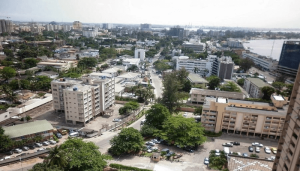Industrial real estate offers hope with 12% annual yield

The Nigerian industrial subsector of the real estate sector has offered green flag to yield-hungry investors with 12 percent annual yield, which places it ahead of other sub-sectors including residential, commercial office and retail.
Across key economies in West Africa, including Nigeria, Ghana and Cote d’Ivoire, the industrial subsector has the highest prime yield of about 12 percent, according to Yomi Olugbenro, West Africa tax leader at Deloitte.
In Nigeria, where the yield is between 4 and 5 percent for residential, commercial office space, 9 percent and retail 8 percent, industrial real estate offers 12 percent and that is the highest in the sub-region. In Ghana, even though it is lower than Nigeria’s at 10 percent, it is still higher than other segments.
In that country, residential real estate offers 7.5 percent, office 8.30 percent while retail gives 7.5 percent. In Cote d’Ivoire, the yield for residential real estate is 7.50 percent. Office gives 9 percent, retail, 9 percent while industrial offers 12 percent.
In Nigeria, real estate remains an icing on the cake in terms of investment opportunities, more so when other investment assets such as Treasury Bill, Bonds, Equities, etc, are no longer viable options.
Though Chudi Ubosi, an estate surveyor and valuer, reasons that unless the Federal Government reviews its economic policies, increase manufacturing activities and provide environment conducive for export, Nigeria’s industrial warehouse space may continue to nosedive, but Ayo Ibaru, research director at Northcourt Real Estate, thinks differently.
Ibaru had, in a report on Industrial Real Estate, said, “Demand for logistics and last mile distribution centres are likely to remain strong investment opportunities for most of 2021.”
Read Also: Trends that defined real estate market segments in 2021
According to Ibaru, positive industrial real estate fundamentals drove asset values to record highs, pointing out that this was amplified by the COVID-19 pandemic, which hastened the move to online retailing and intensified pressure on logistics frameworks.
He pointed out further that demand for inner city warehouses had increased and that this was especially so for last mile assets in central business districts. “Investors have taken notice and are competing for the limited number of available deals. The demand for last-mile logistics is expected to grow, driven by the transition of retailing from brick and mortar to online,” he emphasised.
There are challenges, though, which Ibaru explained, make it difficult to work seamlessly. Part of these challenges is the under par infrastructure. “The supply of standard buildings is restricted, and those that exist are unsuitable, creating a market for small to mid-size warehousing facilities,” he noted.
But investors can find opportunities in Grade A warehouses, which can make it possible for investors to mark rents to international benchmarks. These are particularly attractive for investors who should bear in mind however that the question of where to locate a warehouse has historically been a trade-off between low cost but easily accessible facilities, road transport networks and final product destinations.
Besides industrial real estate, the hotel sector is another attractive investment haven, according to Olugbenro, who spoke at this year’s edition of West Africa Property Investment Summit.
He noted that across the five sub-regions in Africa, West Africa ranks third with regards to infrastructure development. It comes behind North, Southern Africa and the African average and ahead of East and Central Africa.
“West Africa accounts for 30 percent of Africa’s hotel development pipeline, with 24,689 rooms, and that is only slightly below North Africa’s 39 percent pipeline,” he said.
“Nigeria leads the West African park with over 9,000 rooms, followed by Senegal and Cote d’Ivoire. These three are the only West African countries in Africa’s top 10 countries by number of hotel rooms. A slow recovery is expected for current stock, while the hotels already in the delivery phase are expected to be completed, albeit with a pushed-out delivery date,” he said.
The Tax Leader encouraged investors to see opportunities in the real estate sector and key into them, pointing out that the sector has shown resilience in the face of macro-economic issues that have affected other sectors of the economy.
After a historic recovery in the first quarter of 2021 from 12 straight quarters of recession, real estate services recorded 3.85 percent GDP growth in the second quarter of 2021. This growth, which was the sector’s highest in six years, was higher than Q2 of 2020 by 25.84 percent and 2.08 percent higher than Q1 2021 growth.
“Real estate services recorded real GDP growth of 2.32 percent in Q3 of 2021, higher than the growth recorded in third quarter of 2020 by 15.72 percent points, and lower by 1.53 percent points relative to Q2 2021,” Olugbenro noted, adding, “real estate services contributed 5.49 percent to real GDP in Q3 2021, lower than the 5.58 percent it recorded in the corresponding quarter of 2020.”
According to Olugbenro, in Q3 ‘2021, construction grew in real terms by 4.10 (YoY), higher by 1.25 points from prior year and 0.40 percent points above preceding quarter. “Construction contributes 3.22 percent to total real GDP,” he said.







